Brazing is a joining process where melting a filler metal into the joint creates permanent solid bonds. Brazing requires a small joint spacing to allow capillary action to draw the molten filler metal into the joint.
Both welding and brazing utilize heat to join materials, but the essential difference is the temperature.
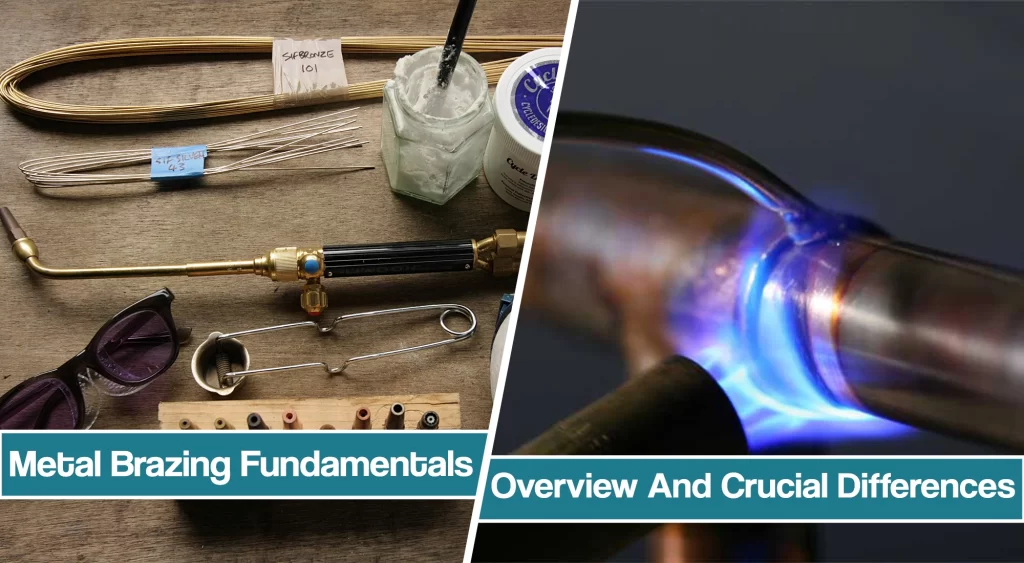
Brazing utilizes the heat of 840°F, which is enough for the brazing filler metal to melt, yet not enough to reach the melting point of base metals. In this article, we will discuss the fundamentals of the metal brazing process and its strengths and weaknesses.
What is Metal Brazing and How Does It Work?
Brazing is the process of joining two independent pieces of metal to form one load-bearing solid joint. Brazing operation is used to join most metals and alloys commonly used in engineering. It is a thermal joining process in which a molten brazing filler metal is drawn into a capillary gap between the metals being joined.
The filler metal flows once heated to a brazing temperature of above 840°F (450°C). So while everything we said sounds pretty much the same as soldering, brazing filler metals have a higher melting temperature.
A molten brazing filler metal will only wet and flow over a parent metal if both are substantially free of surface oxide.
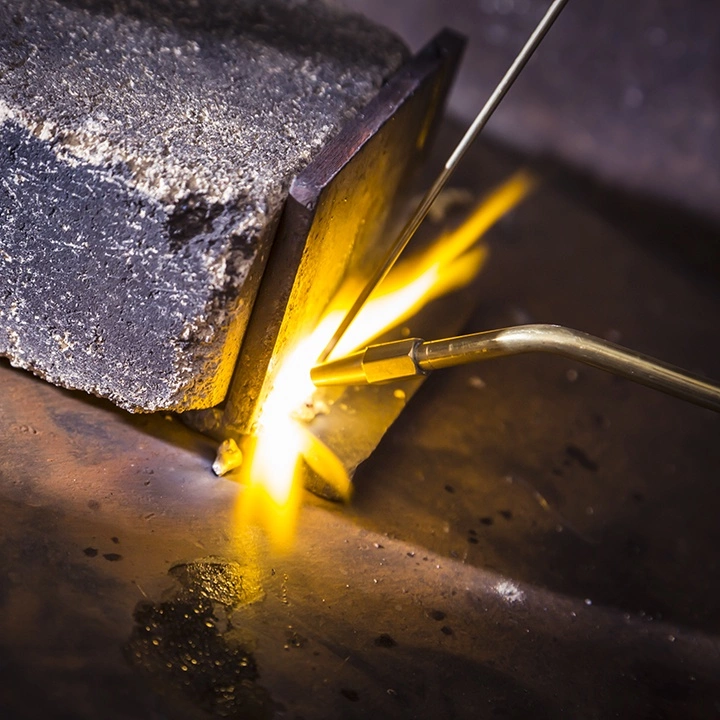
Unfortunately, simply removing surface oxide before brazing is not practical since a new oxide layer is rapidly formed on heating. That’s why operators commonly use flux to provide protection and improve the physical properties of brazing alloy.
Brazing Flux Importance
Fluxes used in metal brazing have three primary functions:
- First, they remove any oxides that form due to heating the parts.
- They promote wetting, the phenomenon whereby a liquid filler metal or flux spreads and adheres in a thin, continuous layer on a solid base metal.
- They aid in capillary action by pulling the molten alloy into the joint.
Keep in mind that brazing fluxes are only designed to remove oxide films. Therefore, just like welding, contaminants such as oil, paint, and lacquer can affect the properties of brazed joints. Thus, all contaminants should be removed prior to brazing, using either mechanical or chemical methods.
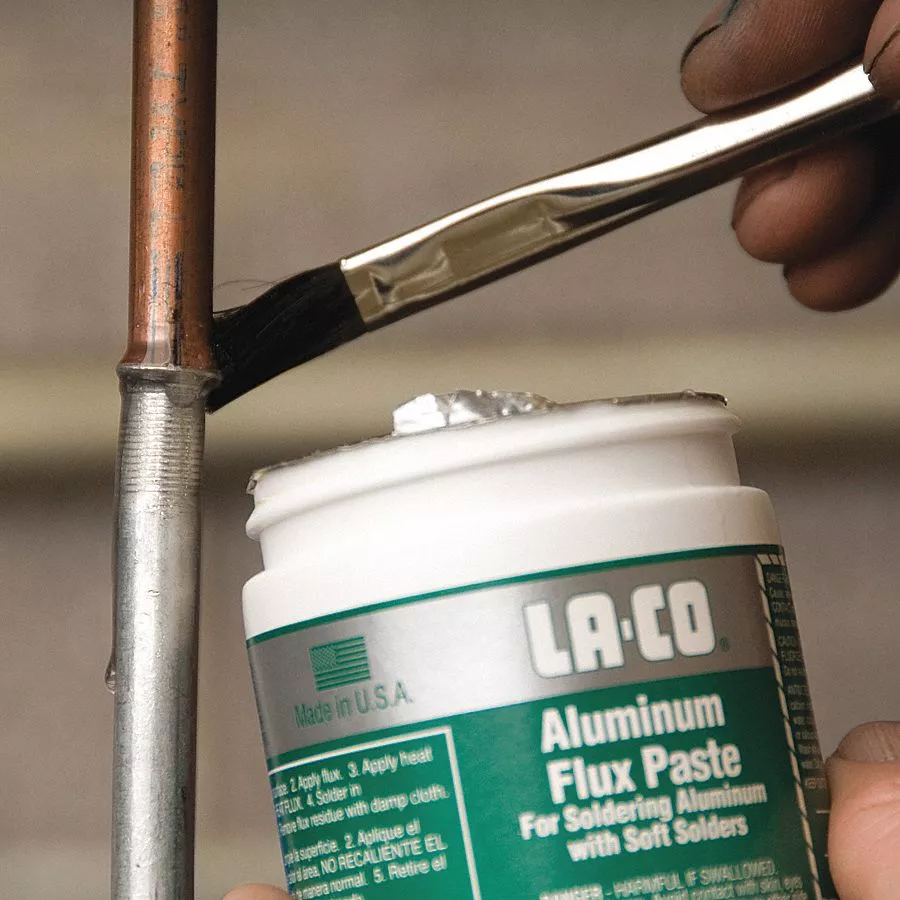
Fluxes are commonly suitable for brazing copper, brass, mild steel, and other common engineering materials. However, special purpose fluxes can be used to join aluminum bronze, stainless steels, tungsten, nickel alloys, molybdenum, and tungsten carbide. Remember that silver brazing fluxes are not effective on aluminum, magnesium, titanium, or their alloys.
Different Methods of Brazing
Brazing utilizes various heat sources, and it is often classified by the heating method used. Some ways heat locally (only the joint area) to achieve brazing temperature, while others heat the entire assembly (diffuse heating).
Even though there are many brazing operations, we will discuss only the commonly used ones.
Localized Heating Methods
As their name states, localized heating methods only apply heat to the welded joint. Most commonly, we are talking about torch brazing, induction brazing, and resistance brazing.
Torch Brazing Fundamentals
In this method, the heat required to melt and flow filler metal is supplied by a fuel gas flame which is carried by a torch.
The fuel gas can be acetylene, hydrogen, or propane regardless of the application and brazed material and is combined with oxygen or air to form a flame.
This process is readily automated and requires low capital investment. However, torch brazing involves using a flux, so a post-braze clean is often needed.
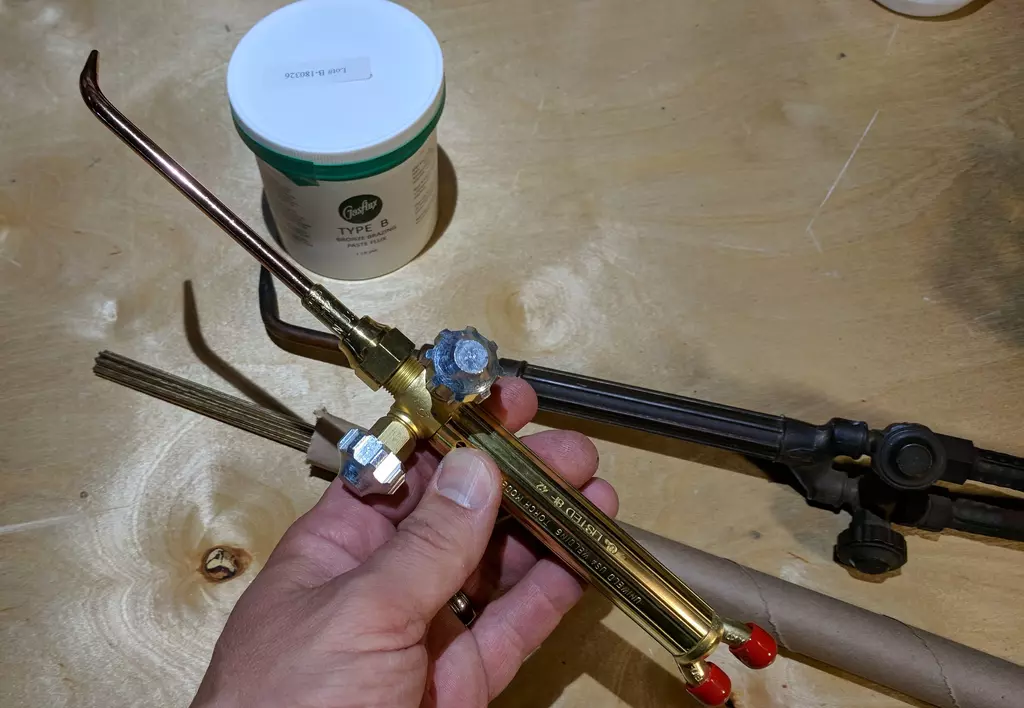
Brazing filler metal may be pre-placed at the joint in the forms of rings, washers, strips, slugs, or powder, or it may be hand-held fed. Manual torch brazing is particularly useful on assemblies involving sections of unequal mass
Induction Brazing Method
In this process, the heat necessary to braze metals is obtained from a high-frequency electric current consisting of a motor-generator, resonant spark gap, and vacuum tube oscillator.
This method is clean and rapid, giving close control of temperature and heat location.
Heat is created by a rapidly alternating current which is induced into the workpiece by an adjacent coil.
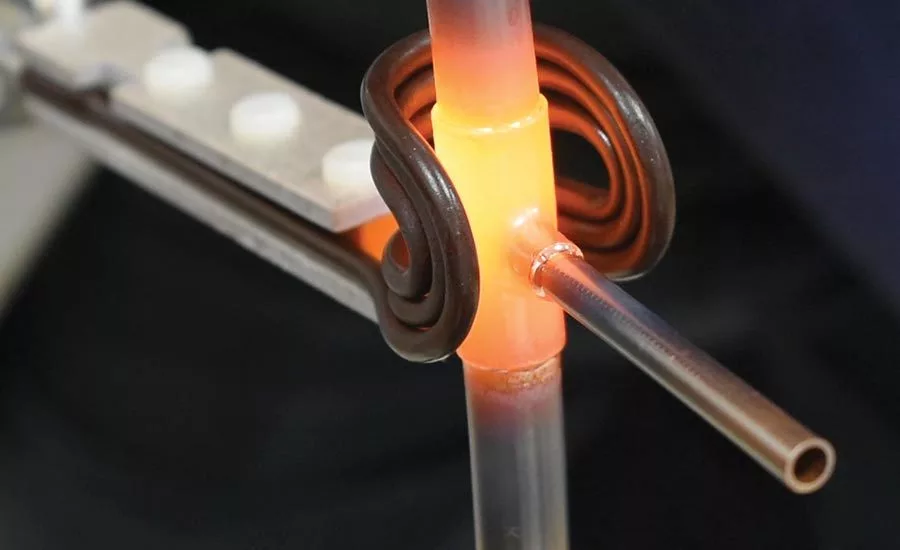
Careful design of the joint and the coil setup are necessary to assure that the surfaces of all joint members reach the brazing temperature at the same time. In addition, flux might be used when an atmosphere is specifically introduced to perform the same function.
Resistance Braze Welding
In this method, heat is generated from resistance to an electrical current (as for induction brazing) flowing in a circuit that includes the workpieces. The process is most applicable to relatively simple joints in metals with high electrical conductivity, such as copper alloys.
Flux is employed except when an atmosphere is specifically introduced to perform the same function.
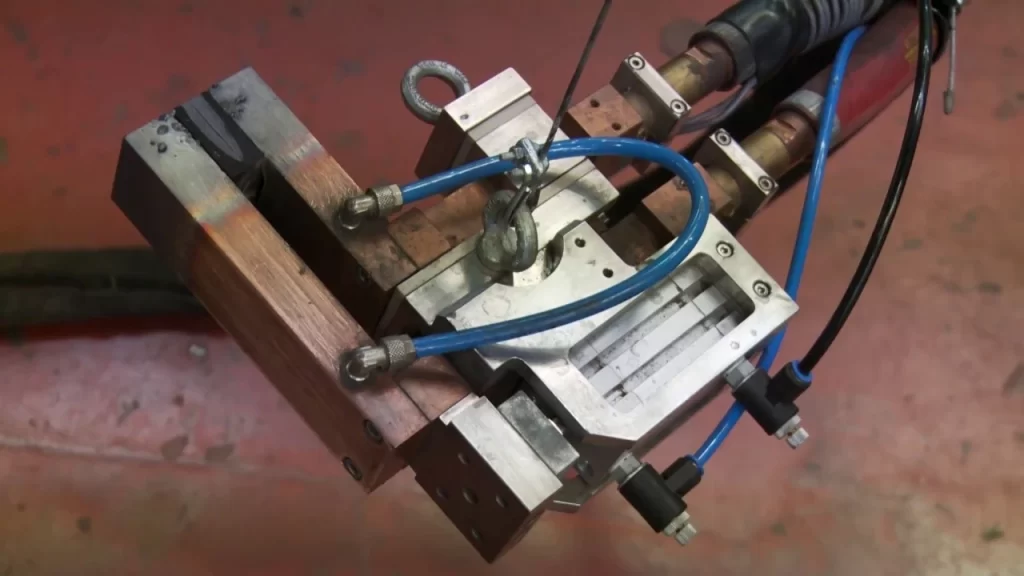
The parts to be brazed are held between two electrodes, and proper pressure and current are applied.
Diffuse Heating Brazing
Brazing operations such as dip brazing or furnace brazing utilize diffused heat transfer which is applied on the entire assembly. Besides these two brazing operations we will describe, there are also specific diffuse heat methods such as infrared brazing, blanket brazing, or exothermic brazing.
Furnace brazing
Furnace brazing offers two prime advantages: protective atmosphere brazing (where high purity gases or vacuum brazing negate the need for flux) and the ability to control accurately every stage of the heating and cooling cycles.
Heating is either through elements or by gas firing. This process is particularly applicable for high production brazing of zirconium, titanium, stainless or refractory metals.
Dip Brazing
This involves immersing the entire assembly in a bath of molten braze alloy or molten flux. In both cases, the bath temperature is below the solidification point of the parent metal but above the melting point of the filler metal.
In chemical bath dip brazing, the brazing filler metal, in a suitable form, is pre-placed, and the assembly is immersed in a bath of molten salt. Meanwhile, in molten metal bath dip brazing, the parts are engaged in a bath of molten brazing filler metal contained in a suitable pot.
Tips and Principles of Successful Brazing
While we presented a brief overview and fundamentals of brazing in the first part of the article, this section will give you essential tips for successful brazing at your home. By following these 6-step brazing guide, you will achieve solid and reliable brazed joints.
Brazing Joint Desing
The first step of successful brazing is ensuring an adequate joint design. The brazing joint should always have a capillary gap into which the molten filler metal can flow. Keep in mind that different expansion rates of the parent metals will affect the joint gap at brazing temperature.
However, this AWS Brazing handbook table can be used to determine the optimum joint gap.
| AWS Brazing Filler Metal | Join Clearance |
|---|---|
| BAlSi group | 0.000-0.002 furnace brazing 0.002-0.008 for a lap less than 0.25 0.008-0.010 for a lap bigger than 0.25 |
| BCuP group | 0.001-0.005 for flux brazing for joint under1.0 0.007-0.015 no flux for flux brazing joint over 1.0 |
| BAg group | 0.002-0.005 flux brazing 0.000-0.002 atmosphere brazing |
| BAu group | 0.002-0.005 flux brazing 0.000-0.002 atmosphere brazing |
| BCu group | 0.000-0.002 atmosphere brazing |
| BCuZn group | 0.002-0.005 flux brazing |
| BMg | 0.004-0.010 flux brazing |
| BNi group | 0.002-0.005 general applications 0.000-0.002 free-flowing types |
Choosing Brazing filler metal
Like in welding, matching brazing filler metal to the base metals is crucial to successful brazing. Therefore, you should consider the component design, the parent metals, the brazing method, and the cost.
The high silver, free-flowing filler metals with low melting ranges are the easiest to use. The American Welding Society’s classification system for brazing alloys uses the letter B to indicate that the alloy is to be used for brazing.
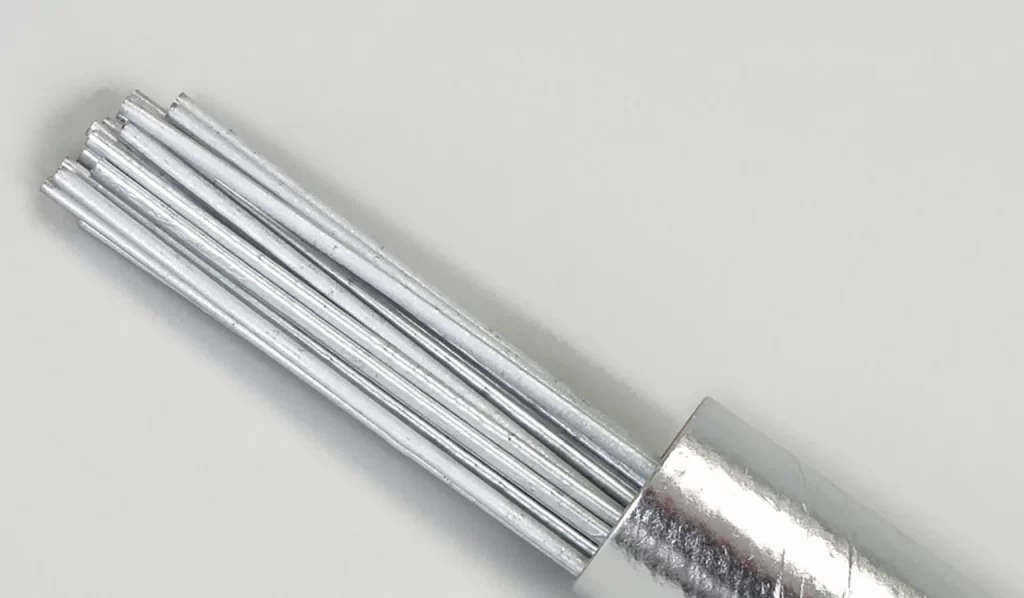
The following letters indicate the atomic symbol of metals used to make up the alloy, such as CuZn (copper and zinc).
| Base Metal | Brazing Filler Metal |
| Aluminum | BAlSi, aluminum silicon |
| Carbon steel | BCuZn, brass BCu, copper alloy BAg, silver alloy |
| Alloy steel | BAg, silver alloy BNi, nickel alloy |
| Stainless steel | BAg, silver alloy BAu, gold base alloy BNi, nickel alloy |
| Cast iron | BCuZn, brass |
| Galvanized iron | BCuZn, brass |
| Nickel | BAu, gold base alloy BAg, silver alloy BNi, nickel alloy |
| Nickel-copper alloy | BNi, nickel alloy BAg, silver alloy BCuZn, brass |
| Copper | BCuZn, brass BAg, silver alloy BCuP, copper phosphorous |
| Silicon bronze | BCuZn, brass BAg, silver alloy BCuP, copper phosphorous |
| Tungsten | BCuP, copper phosphorous |
Cleaning the Surface Before Brazing
The components to be joined should be free from grease and any surface oxide to promote good bonding. Flux can help you in removing oxides, but contaminants should be removed by using a degreasing solvent. Even though hot, soapy water can be effective in removing grease and oil, chemical and mechanical cleaning processes can be used.
Chemical
- petroleum spray
- chlorinated solvents
- vapor de-greasing
- emulsion spray
- alkaline soak
- acid pickling
- trichlor solvents
Mechanical
- sandblasting (exercise caution to avoid damage to the metal surface)
- machining
- grinding
- brushing (wire brush)
Applying Flux to the Brazed Joint
The choice of flux is as important as the choice of filler metal. The working range of the flux must be compatible with the brazing temperature and the parent metals. Ideally, the flux should be applied to both components before assembly and prior to heating.
It is recommended that flux should be applied as a paste to the parts to be joined.
Powders can be made into pastes by stirring in water until the mixture has the consistency of thick cream. The flux should be applied to both joint surfaces before assembly. Application of flux after assembly places great demands on the fluidity of the molten flux and its ability to penetrate capillary joints. Flux may be applied in the following ways:
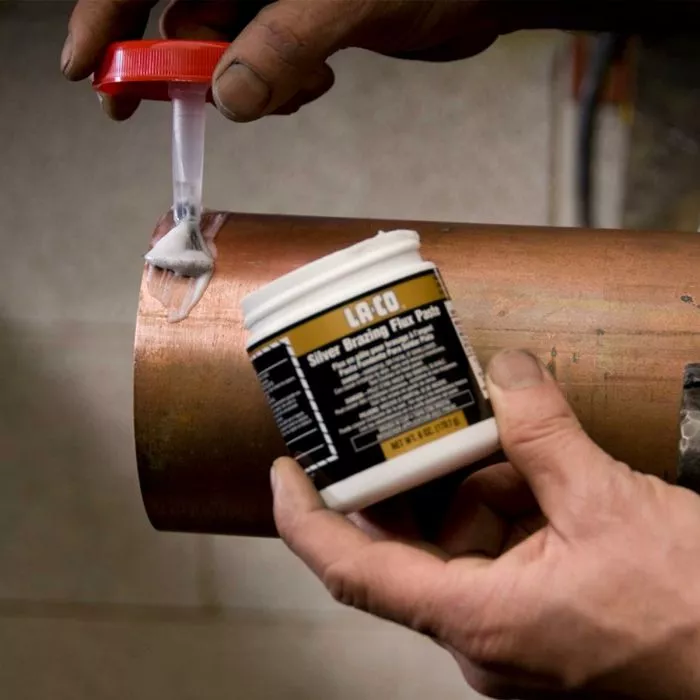
- Brushing can be used to apply a thin film of paste to the joint itself and to surrounding component surfaces.
- Brazing flux may be applied by dipping one or more components of an assembly into a container of flux. This is most effective with a paste of a thin consistency
- Automatic application of flux is possible and can be used for mass production
- The hot-rodding technique includes dipping the warm brazing rod into flux powder, and the flux adhering to the rod is transferred to the joint area.
Heating The Joint And Applying Brazing rods
It is essential that the parent metals are heated evenly to the correct temperature for brazing. In addition, the flux should be apparent and flow over the joint area. When brazing copper, the metal should be a dull cherry red indicating the correct temperature has been reached.
As we noted, free-flowing filler metal alloys will flow into and around the joint by capillary attraction. Therefore, you should apply filler metal along the entire joint, building up a fillet.
You should continue heating the filler metal powder that melted into the joint. For torch brazing, you should not use direct heating.
Cleaning after Brazing
Finally, after you have completed the brazing, you should remove the flux residues since they can affect the strength of the welded joint. Once the alloy has solidified, you can use a hot water bath to remove the leftover flux.
Keep in mind that you should be extra careful during cooling. If you try to interfere with a brazed joint during cooling, you might damage the component or cause cracking due to thermal shock.
Properties of Strong Brazed Weld
If you carefully followed the brazing cycle we recommended above, you likely achieved a robust and solid brazed joint. However, if you wondered whether you did it correctly, here are some properties of a well-welded joint.
- Well-made brazed joints are at least as strong as the parent metals. As it stands, they can withstand demanding service conditions.
- Brazing produces leak-tight joints. Since it is a relatively economical method, it is widely used on liquid and gas pipe-work installations.
- Brazed welds offer good electrical conductivity. That’s why the brazing metal joining process is often used in applications where this property is essential.
- Brazed joints have smooth, neat fillets and that’s why the method is occasionally used when appearance and aesthetics are essential.
Difference Between Brazing and Welding
While both brazing and welding use heat to join metal pieces, the main difference is in the temperature needed and heat sources.
Brazing takes place at temperatures above 840°F (450°C), while welding temperatures can reach 10,000 degrees Fahrenheit. That way, there is no thermal distortion and residual stresses in the brazed joints.
On the other hand, welded joints are significantly stronger, and heat and stress-resistant compared to brazing bonds. If you want to learn the difference between brazing, welding, and soldering, feel free to check out our detailed article.
Pros and Cons of Brazing
Advantages
- Brazing is used to bond a variety of ferrous metals, joining dissimilar metals, and even non-metals (e.g., metalized ceramics)
- Brazing processes do not melt the base metal surfaces; they allow a much stricter control of the properties and tolerances.
- Brazing produces a clean joint, so there is little to no cleaning besides flux residues. As a result, it is profitable because it does not require an expensive secondary operation.
- Brazing ensures corrosion resistance of the joints.
- There is no arc or sparks as in welding. The uniform heating of a welding part in the brazing process helps to minimize thermal distortion and improve the technical properties of metals.
- Brazing is used for thin sheets and pipes that cannot be joined by welding.
- Brazing provides excellent sealing as compared to spot welding, riveting, and bolt fastening.
- Malleable iron castings are usually repaired by brazing because the heat required for fusion welding can affect the characteristics and properties of metal.
Drawbacks
- Due to the melting range of the filler metals, the joints are not effective at higher temperatures.
- The color of the joint often differs from the base metal which creates an aesthetic disadvantage.
- The metal joint must be strictly prepared to ensure the capillary action of filler metal.
- The strength of the welded joint is weaker compared to the traditional welding method
- Large cast-iron plates cannot be brazed, regardless of the cast-iron rods
Resources
- https://www.twi-global.com/technical-knowledge/faqs/faq-what-is-brazing
- https://www.bernzomatic.com/Projects/Fix/Braze-Metal
- https://lucasmilhaupt.com/EN/Brazing-Academy/Brazing-vs-Welding.htm
- https://www.thefabricator.com/thewelder/article/tubepipefabrication/6-steps-to-successful-brazing
- https://www.engineeringchoice.com/brazing/





